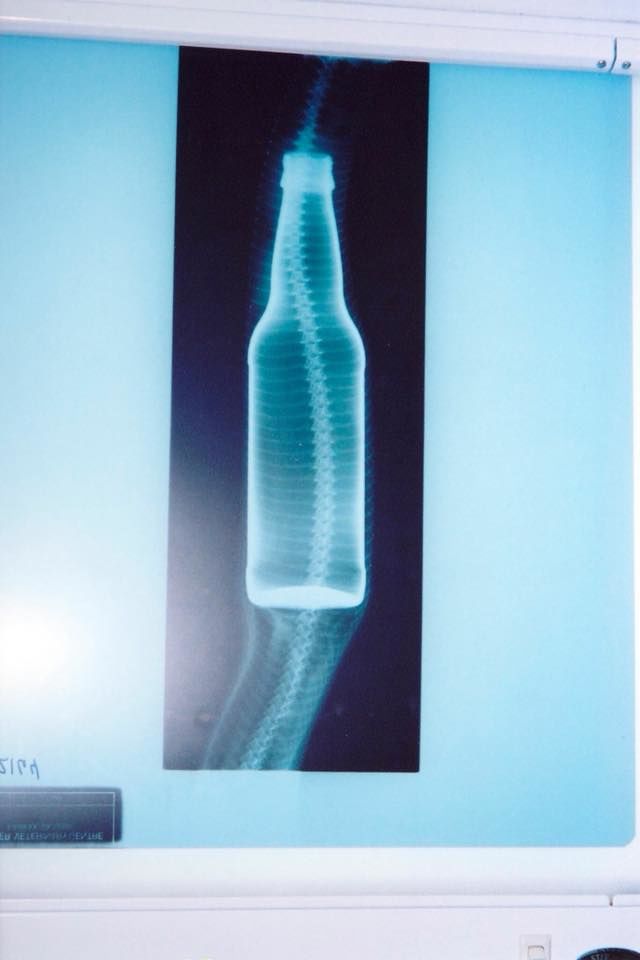
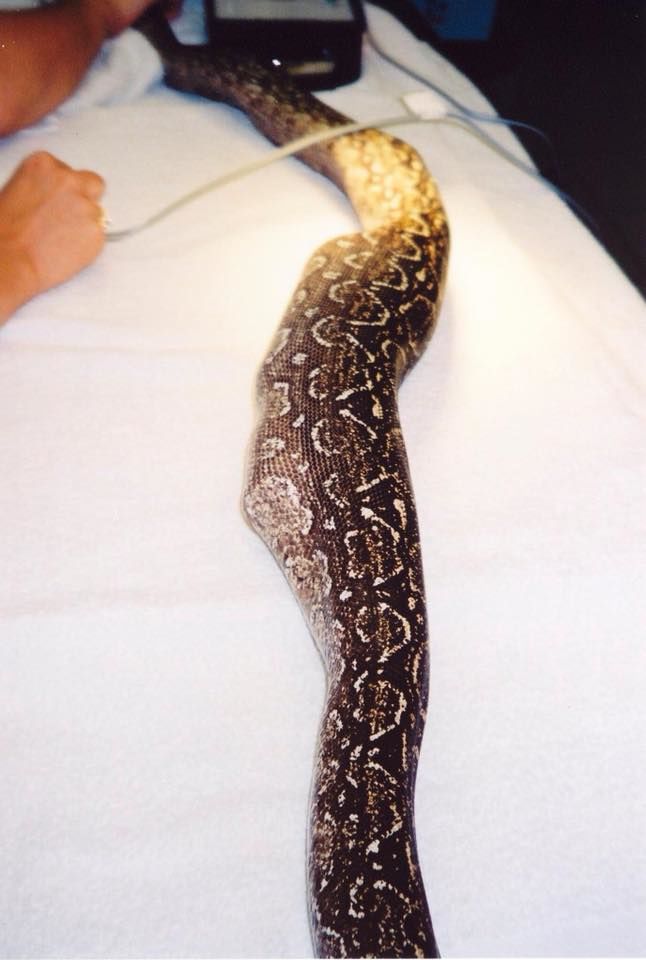
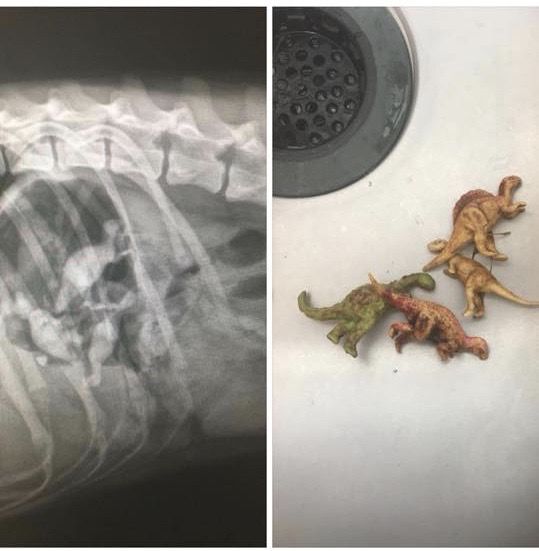
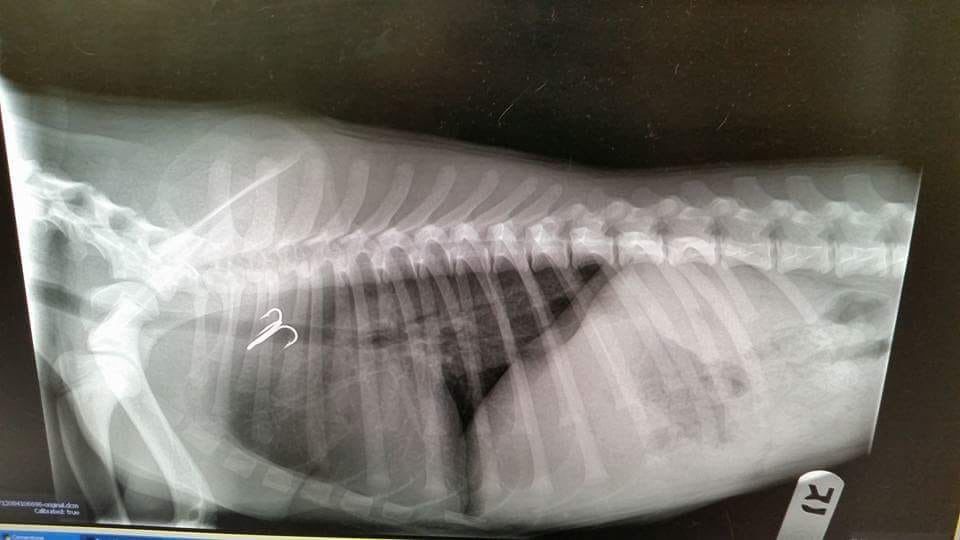
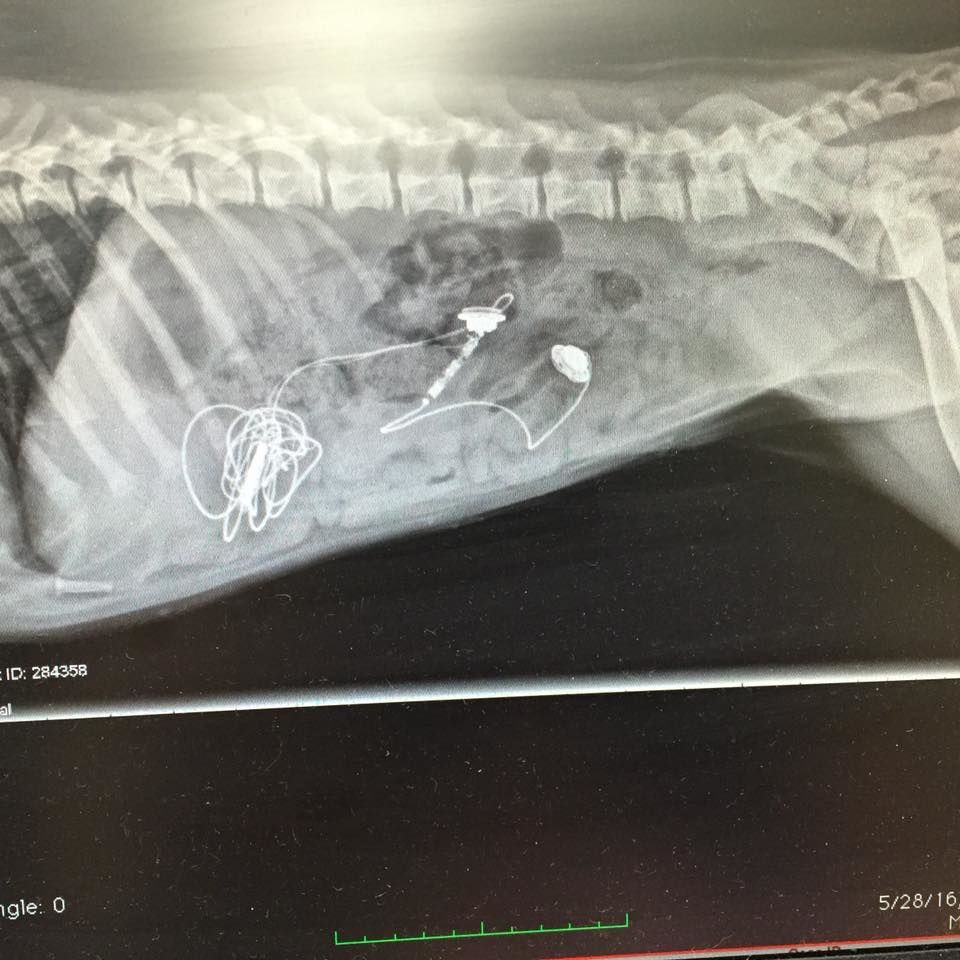
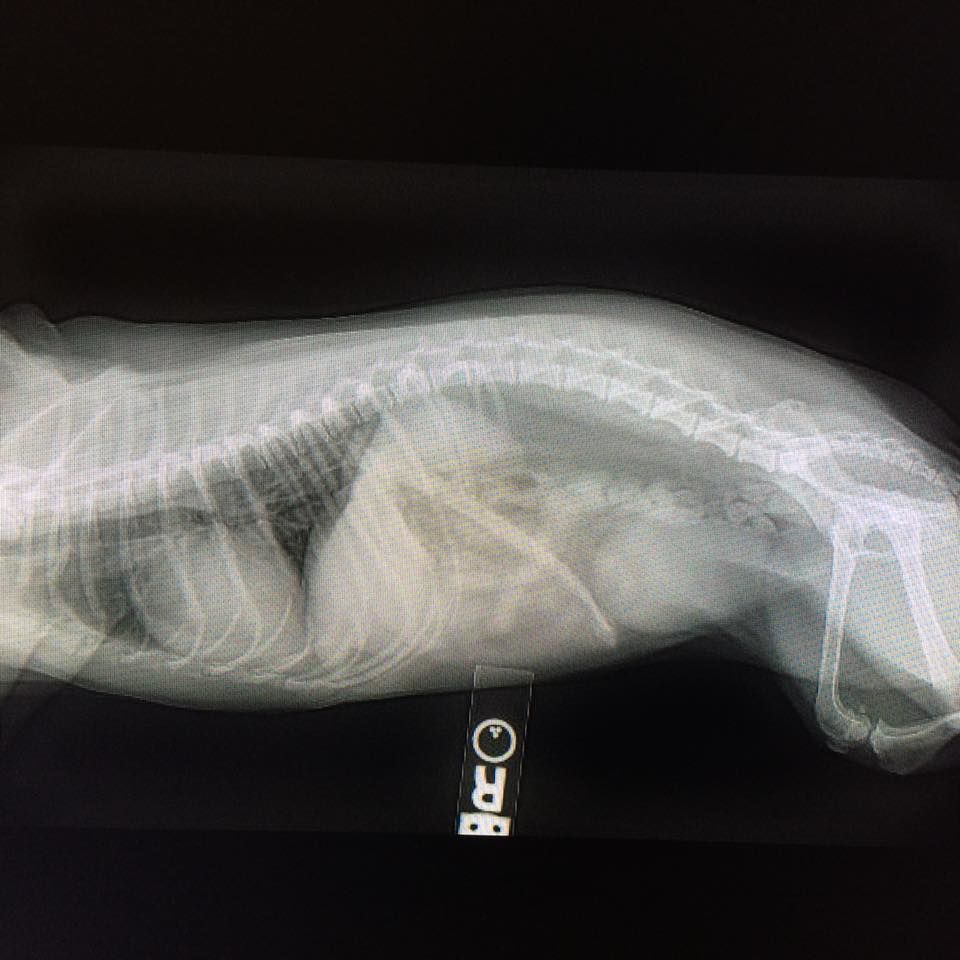

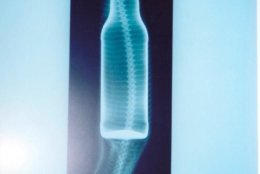
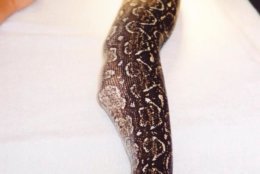
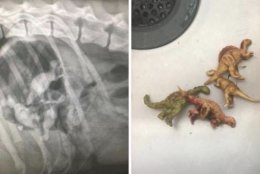
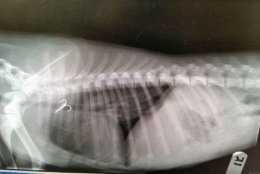
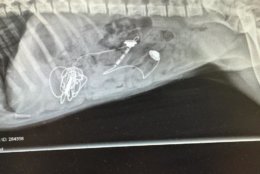
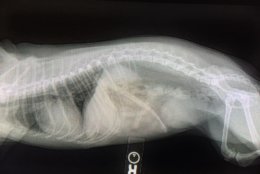
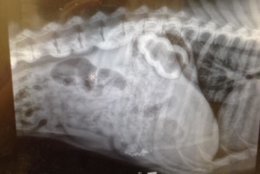
WASHINGTON — From 37 pacifiers to 17 corn cobs, veterinarian Dr. Katy Nelson has seen the full spectrum of the most bizarre things animals have swallowed.
While the contents of a pet’s stomach may be comical, the health risks associated with animals swallowing things they shouldn’t is no laughing matter.
Nelson told WTOP best practices to help your curious pet from swallowing potentially harmful objects and warning signs to look for if it’s already taken place.
First and foremost, Nelson says time is of the essence when an animal has a nonfood item in its stomach.
“Pick up the phone, call your vet and say ‘I am on my way,’” Nelson said. “If we can catch this soon enough, we may be able to bring it out of the stomach. However, if its hours later, it could potentially already be down in the intestinal track, and there is no retrieving it easily that way.”
At this point in Nelson’s career, nothing surprises her anymore. But she still finds herself questioning why in the world an animal would find objects such as a fish hook or hair tie appetizing.
“You have to think, ‘Why in the world would you swallow that?’” Nelson said. “We always say dogs are bad decision makers. But it’s not just the dogs. Cats do it as well.”
Nelson said surgery is the most common option to remove an object from an animal once it is digested.
To avoid that route altogether, she advised picking up around the house and said to keep an eye on pets even if they have routine toys such as a bone or rawhide because those objects can be swallowed whole as well.
Signs that your pet may have ingested something foreign:
- Lethargy, depression
- Vomiting, lack of appetite
- Diarrhea, possibly with blood
- Abdominal pain/hunching
- Fever






